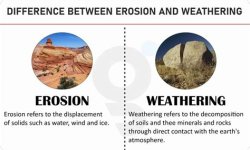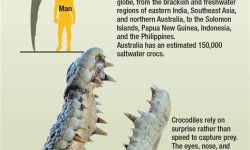Pteranodon vs Pterodactyl: What’s the Difference?
When it comes to prehistoric creatures, pterosaurs are some of the most fascinating and enigmatic beings to have ever roamed the Earth’s skies. Two of the most well-known and commonly confused pterosaurs are the Pteranodon and Pterodactyl. In this blog post, we’ll delve into the world of these ancient flying reptiles and explore the key differences between the two. We’ll start by introducing the Pteranodon and Pterodactyl, examining their physical characteristics, including their size, wingspan, and distinctive features. Then, we’ll compare their dietary habits and hunting techniques to uncover how they survived in their ancient ecosystems. Finally, we’ll touch upon their extinction and what the fossil record reveals about these incredible creatures. By the end of this post, you’ll have a deeper understanding of these magnificent creatures and be able to distinguish between the Pteranodon and Pterodactyl with ease. Let’s soar into the skies of prehistory and unravel the mysteries of these awe-inspiring pterosaurs.
Introduction to Pteranodon and Pterodactyl
Pteranodon and Pterodactyl are two well-known flying reptiles from the prehistoric era, belonging to the group of pterosaurs. These creatures lived during the late Cretaceous period, around 70 million years ago, and were remarkable for their ability to soar through the skies with their impressive wingspans.
Both Pteranodon and Pterodactyl were not dinosaurs, but rather belonged to a distinct group of reptiles that dominated the skies during the Mesozoic era. They were well-adapted for flying and had a unique skeletal structure that supported their flight capabilities.
Pteranodon and Pterodactyl have fascinated scientists and paleontologists for centuries, and their fossils have provided valuable insights into the evolution of flight in vertebrates. These incredible creatures continue to capture the imagination of people around the world with their unique appearance and flying abilities.
While Pteranodon and Pterodactyl share some similarities, they also have distinct differences in terms of their physical characteristics, behavior, and ecological roles. Exploring the world of these ancient flying reptiles offers a fascinating glimpse into the diversity of life that thrived on Earth millions of years ago.
Physical Characteristics of Pteranodon
Pteranodon was a large flying reptile that lived during the Late Cretaceous period, approximately 85 million years ago. One of the most striking physical characteristics of Pteranodon was its wingspan, which could reach up to 33 feet in some individuals. This immense wingspan allowed Pteranodon to soar through the skies with ease, making it one of the most dominant creatures of its time.
Another notable physical characteristic of Pteranodon was its cranial crest, which differed between males and females. Male Pteranodons had larger cranial crests, which were likely used for display and attracting mates, while females had smaller, more subdued crests. This sexual dimorphism is a unique feature of Pteranodon and has been the subject of much study and speculation among paleontologists.
In addition to its impressive wingspan and distinctive cranial crest, Pteranodon also had a long, toothless beak that was perfectly suited for catching and eating fish. Like modern-day birds, Pteranodon had a hooked beak that allowed it to snatch fish from the water while in flight. This specialized beak indicates that Pteranodon was a primarily piscivorous creature, relying on a diet of fish for sustenance.
Overall, the physical characteristics of Pteranodon paint a vivid picture of a formidable aerial predator that dominated the prehistoric skies. Its impressive wingspan, distinctive cranial crest, and specialized beak make Pteranodon a fascinating subject of study for scientists and enthusiasts alike.
Physical Characteristics of Pterodactyl
The Pterodactyl was a flying reptile that lived during the late Jurassic period. It had a wingspan of up to 33 feet, making it one of the largest known flying creatures. The most distinctive physical characteristic of the Pterodactyl was its elongated fourth finger, which supported a wing membrane, allowing it to fly. This adaptation gave the Pterodactyl the ability to soar through the skies in search of prey.
Another notable physical characteristic of the Pterodactyl was its long, pointed beak, which it used to catch fish and other small animals. Its sharp teeth lined the edges of its beak, allowing it to grip and tear its prey apart. The Pterodactyl also had a lightweight, hollow bone structure, similar to modern birds, which allowed it to be agile and swift in flight.
In addition to its wings and beak, the Pterodactyl had a short tail and a relatively small body compared to its wingspan. This body structure helped to reduce weight and increase aerodynamics, making it an efficient and skilled hunter in the prehistoric skies.
Overall, the Pterodactyl possessed a unique set of physical characteristics that enabled it to be a formidable aerial predator during the time of the dinosaurs.
Differences in Size and Wingspan
Pteranodon and Pterodactyl are both types of pterosaurs, flying reptiles that lived during the Late Cretaceous period. One major difference between these two creatures is their size and wingspan. Pteranodon was a much larger pterosaur, with an average wingspan of around 25 feet, making it one of the largest flying animals of all time. On the other hand, Pterodactyl was considerably smaller, with a wingspan of only around 3 feet.
Another key difference in their size is their body mass. Pteranodon had a much heavier body compared to Pterodactyl, which was more lightweight in build. This affected their flight capabilities and hunting behaviors, as Pteranodon would have been able to cover larger distances and carry heavier prey.
In terms of wingspan, the structure of their wings also varied. Pteranodon had longer wings with a bony structure, allowing it to soar and glide effortlessly through the skies. Pterodactyl, on the other hand, had shorter wings that were more suited for maneuvering in close quarters and catching smaller prey.
Overall, these differences in size and wingspan between Pteranodon and Pterodactyl highlight the diversity and uniqueness of these ancient creatures, and offer insight into how they adapted to their environment and evolved over time.
Dietary Differences and Hunting Techniques
When it comes to the dietary differences between Pteranodons and Pterodactyls, there are some interesting distinctions to be made. Pteranodons were primarily fish-eaters, with long, pointed beaks designed for catching fish in the water. On the other hand, Pterodactyls had a more varied diet, including fish, small animals, and even insects. Their sharp teeth made them efficient hunters, capable of capturing a wide range of prey.
As for their hunting techniques, Pteranodons used a method known as plunge diving. They would soar high above the water, then dive down to catch fish with their beaks. Pterodactyls, on the other hand, were more versatile hunters, using their agility and speed to swoop down and grab their prey from various locations. Their different hunting techniques were adapted to their specific diets, allowing them to thrive in their respective environments.
Understanding the dietary differences and hunting techniques of these ancient creatures gives us insight into their behavior and adaptation to their natural habitats. Despite their similar appearance, Pteranodons and Pterodactyls had distinct strategies for obtaining food, which contributed to their success as aerial predators during the time of the dinosaurs.
With the knowledge of their dietary preferences and hunting methods, we can appreciate the diverse and complex nature of these flying reptiles, and the crucial role they played in the ecosystem of prehistoric times.
Extinction and Fossil Record
The extinction of the Pteranodon and Pterodactyl is a topic of much debate among paleontologists. While there is no definitive answer as to why these magnificent creatures went extinct, there are several theories that attempt to explain their disappearance from the fossil record.
One of the most widely accepted theories is that the extinction of these flying reptiles was caused by environmental changes, such as the breakup of the supercontinent, Pangea. As the Earth’s landmasses shifted and the climate changed, the habitats of these creatures may have become unsuitable for their survival.
Another theory suggests that competition with newly evolved birds may have contributed to the demise of the Pteranodon and Pterodactyl. As birds evolved and became more adept at hunting and flying, they may have outcompeted the ancient flying reptiles for food and resources.
Despite these theories, the exact cause of the extinction of the Pteranodon and Pterodactyl remains a mystery. However, their fossil record provides valuable insights into their existence and offers us a glimpse into the prehistoric world they inhabited.
Frequently Asked Questions
What is the difference between Pteranodon and Pterodactyl?
Pteranodon and Pterodactyl are both flying reptiles from the Mesozoic era, but they belong to different genera. Pteranodon is known for its larger size and distinct head crest, while Pterodactyl is smaller and has a shorter wingspan.
What are some physical characteristics of Pteranodon?
Pteranodon had a wingspan of up to 30 feet and a large, backward-sloping crest on its head. Its beak was long and toothless, and it had a relatively short tail compared to other pterosaurs.
What are some physical characteristics of Pterodactyl?
Pterodactyl had a wingspan of around 10 feet and a smaller, more pointed head crest. Its beak was also long and toothless, but it had a longer tail compared to Pteranodon.
How did the size and wingspan of Pteranodon and Pterodactyl differ?
Pteranodon was much larger than Pterodactyl, with a wingspan of up to 30 feet compared to Pterodactyl’s 10 feet wingspan. This made Pteranodon one of the largest pterosaurs of its time.
What were the dietary differences and hunting techniques of Pteranodon and Pterodactyl?
Pteranodon likely fed on fish, using its long beak to snatch them from the water, while Pterodactyl may have had a more varied diet, including small vertebrates and insects. Their hunting techniques are inferred from their beak shapes and likely habitats.
What do we know about the extinction and fossil record of Pteranodon and Pterodactyl?
Pteranodon and Pterodactyl both went extinct at the end of the Mesozoic era, along with the dinosaurs. Fossils of both species have been found in various locations around the world, providing valuable information about their anatomy and behavior.
Conclusion of the differences between Pteranodon and Pterodactyl?
In conclusion, Pteranodon and Pterodactyl were distinct species of pterosaurs with different physical characteristics, sizes, and likely feeding habits. Studying their fossils helps us understand the diversity of life in the prehistoric era.



